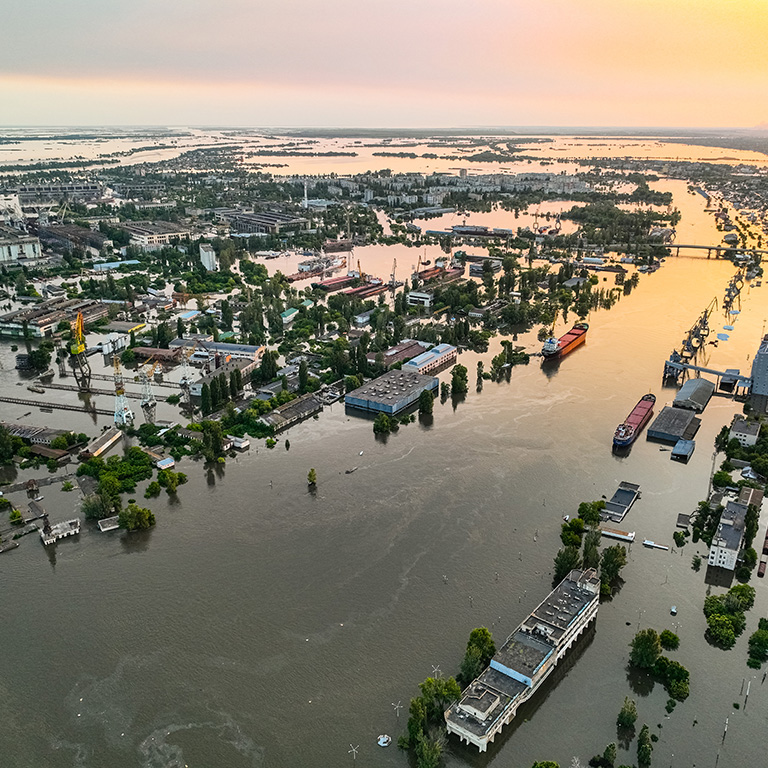
By Amy Barnes ,
Global Head of Energy & Power, Marsh
10/09/2023 · 4 minute read
New York Climate Week provided a timely reminder that there are two sides to the climate change discussion. While much attention remains on mitigation and the net-zero transition, the other side – adaptation and resilience – is gaining increased focus.
To date, there has been a general sense of hesitancy to talk publicly about adaptation for fear of appearing defeatist. In reality, climate change is already with us. And we need to find the bandwidth to conduct conversations about adaptation and resilience alongside mitigation.
Nature risk commanded attention in New York, partly due to the long-awaited publication of the TNFD (Taskforce on Nature-related Financial Disclosures) framework. As with the equivalent climate-related taskforce, there are growing calls for the framework ultimately to become mandatory. Mark Carney, the UN Special Envoy for Climate Action and Finance, is among those who have said a move to mandatory standards for nature-related risks is appropriate.
Nature action has been lagging behind climate action, but one speaker suggested why it could rapidly catch up: For colleagues on the ground, their impact on climate change is abstract, but their impact on nature is often something employees can see by looking out of the window.
The growing focus in New York on adaptation and resilience was welcome, given the extent to which people and businesses are being impacted by extreme weather. While attention is growing in this area, still not enough businesses are looking forward at the potential impacts of climate change on existing or newly built assets.
Part of the problem is that insurance is typically renewed annually – it looks only a year ahead, with an assessment of risks based on historical experience. This model faces challenges when records for extreme weather are being broken every year.
In contrast, risk managers have a responsibility for the asset over its lifetime. Risk managers need a longer term focus to understand how weather-related hazards may change over time and the actions they can take to build resilience, and avoid or minimise coverage restrictions into the future.
Potential new approaches are emerging, such as parametric insurance and climate resilience credits. Fundamentally, however, insurance is designed to mitigate against uncertainty, not certainty. Climate change will in future make it practically certain that extreme weather events such as floods will happen in particular locations — the only question is when. And, in these cases, businesses will need to look towards building other forms of resilience against risks that are highly likely to occur.
The insurance industry needs to work with clients to look ahead at how climate change may change their risks in the decades to come, and to offer products that support investment in resilience. Greater collaboration between the insurance industry and governments is also required, as our expertise in modeling risks can inform government policy.
This kind of collaboration will require clarity and transparency about the scale of the problem, which points to another barrier to these conversations about adaptation: the understanding of the true cost to build resilience. For this to be accurate, insight from businesses is needed. However, businesses may be concerned about reporting on potential adaptation costs, fearing that it may affect their valuations – and that insurers may adjust terms and conditions.
Open dialogue about the financial implications of improving resilience is essential – not only for safeguarding owned assets, but also the resilience of supply chains, an increasingly salient issue.
The vulnerability of global supply chains to extreme weather crises was illustrated by events this year – such as floods in Slovenia that have negatively impacted the automotive industry – highlighting the urgency of these conversations.
The extent to which businesses talk about their climate exposure – their own assets, their supply chain, and the infrastructure they rely on – still varies by business and sector. And while discussions were more common at Climate Week this year than a year ago, actual defensive actions are not yet widespread, and reporting remains rare.
By next year, I hope the conversation will have moved on even further to a point where adaptation and resilience are not just emerging topics of discussion, but instead areas where actions and solutions are being implemented across industries. Insurers have a critical role to play in ensuring that happens.

Article,Featured insight
12/01/2025

Report,Featured insight
09/19/2025